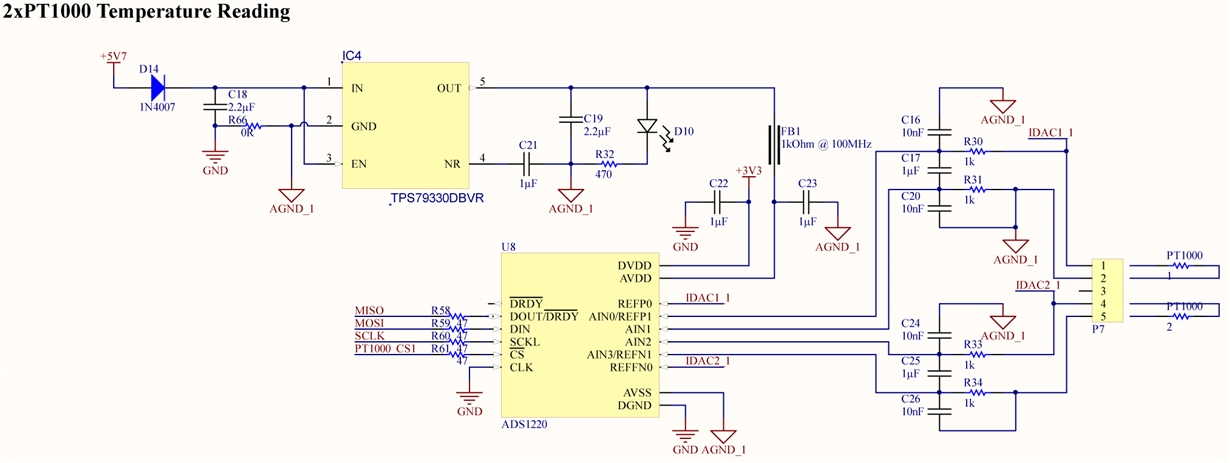Other Parts Discussed in Thread: ADS124S06
Respected,
I need to design circuit to measure two PT1000 sensors with one IC with resolution of 0.01C and accuracy of +-0.1C. Attached I am sending to you the design. I am using its internal 2.048V reference voltage. I need an advice from your experts on how precise (temperature and long term drift) are the internal voltage reference and the IDACs and will I accomplish my required resolution and accuracy using this configuration?
Many Thanks,
Ilija



